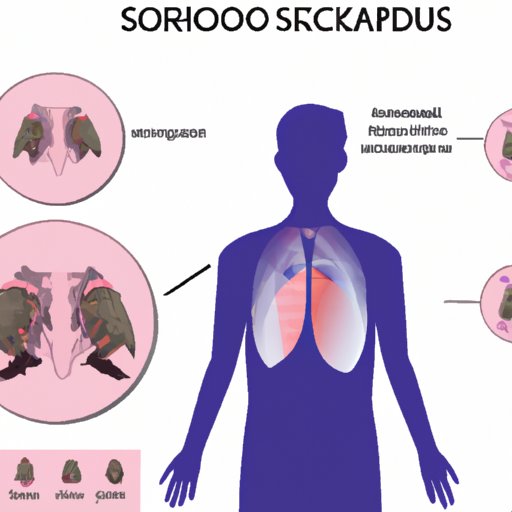
Introduction
Sarcoidosis is a rare disease that affects various organs in the body, most commonly the lungs, lymph nodes, and skin. This disease is caused by the growth of tiny clumps of inflammatory cells called granulomas in different parts of the body. Although the cause of sarcoidosis is still unknown, it is believed that both environmental and genetic factors play a role in the development of this disease. In this article, we will explore the symptoms, causes, and treatment options for sarcoidosis.
Symptoms of Sarcoidosis
Sarcoidosis can affect any organ in the body, but it most commonly affects the lungs. Some of the most common symptoms of sarcoidosis include coughing, shortness of breath, chest pain, and skin rashes. In addition, sarcoidosis can cause fatigue, fever, joint pain, and swollen lymph nodes. The psychological symptoms of sarcoidosis can include depression, anxiety, and panic attacks. If you experience any of these symptoms, it is important to talk to your doctor as soon as possible.
Causes of Sarcoidosis
The cause of sarcoidosis is still unknown, but it is believed that both environmental and genetic factors play a role in the development of this disease. Environmental factors that have been linked to sarcoidosis include exposure to chemicals, dust, and other harmful substances, such as beryllium. There is also a genetic component to sarcoidosis, as certain gene mutations have been associated with an increased risk of developing the disease.
Diagnosis of Sarcoidosis
If you are experiencing symptoms that could be caused by sarcoidosis, your doctor may run a series of tests to diagnose the disease. These tests can include a chest X-ray or a CT scan, which can show the presence of granulomas in the lungs. Blood tests can also be done to look for certain chemicals that are present in people with sarcoidosis. A biopsy may be necessary to confirm the diagnosis, and this can be done on the skin, lymph nodes, or lungs.
Treatment Options for Sarcoidosis
Although there is no cure for sarcoidosis, there are a variety of treatment options that can help manage the symptoms of the disease. The first line of treatment for sarcoidosis is usually medications, such as corticosteroids, which can reduce inflammation and prevent the formation of new granulomas. Other medications, such as immunosuppressants, can also be used to treat sarcoidosis. In addition to medications, there are also self-care and lifestyle modifications that can help manage the symptoms of sarcoidosis, including quitting smoking, eating a healthy diet, and getting regular exercise.
Conclusion
Sarcoidosis is a rare disease that can cause a variety of physical and psychological symptoms. Although the cause of sarcoidosis is still unknown, there are a variety of treatment options available that can help manage the symptoms of the disease. It is important to talk to your doctor if you are experiencing any symptoms that could be caused by sarcoidosis, as this can help ensure an accurate diagnosis and prompt treatment. With appropriate treatment and self-care, it is possible to live a fulfilling life with sarcoidosis.





